Running in Germany
Running a marathon in Germany and learning about Gutenberg's printing press
A book to read: Mighty Moe
In high school, I remember thinking that feminism was stupid. My mother, exasperated, constantly reminded me that without feminism I wouldn’t be able to run cross country, the sport that dominated my life in high school. I’d roll my eyes, lace up my running shoes, and run away in blissful ignorance, confident that I’d always be given the same opportunities and responsibilities as men.
Later, I read Gloria Steinem: “Women tend to be conservative in youth and get more radical as they get older because they lose power with age. So if a young woman is not a feminist, I say, ‘Just wait.’”
Of course, Mom and Gloria were right.
In addition to being a misogynist at 14, I wasn’t a natural athlete.
I hated running for the entirety of my first track season. I wouldn’t have been like those female athletes in the ‘60s, who secretly ran their miles on out-of-the-way country roads, pretending to pick wildflowers whenever a car drove by. I NEEDED the legal right to participate in sports. I also needed said sports to be provided by my public high school. I also needed acceptance and encouragement from the society around me. Luckily, I had all that. I owe my running, one of the greatest joys of my life, to feminist athletes who raced before me.
Maureen Wilton was nothing like me. She was fast and loved running from her first track workout. In 1963, at the age of 10, Maureen found a man willing to coach her (Sy Mah, the Canadian son of Chinese immigrants, who had a young daughter who ran track), and brought her to races. Maureen’s success brought other young girls to the sport.
Maureen’s running achievements, life, and social context are chronicled in MIGHTY MOE: The True Story of a Thirteen-Year-Old Women’s Running Revolutionary. Moments of the book are pure running joy, especially the beginning of the book: Mo’s love of the sport, her camaraderie with a growing team of young women, and the unwavering support of her family are all delightfully chronicled.
Then the book gets serious. It’s marathon time. Maureen ran her first marathon at 13, intending to break the women’s world record. The Canadian Amateur Athletic Union refused to officially recognize her as a participant, but she broke that record anyway, running a 3:15:23.
Somewhere behind her, the men who were allowed to run this race because of their strong bodies and masculine minds hobbled forward. The girl who wasn’t supposed to be able to do this smiled to her friends and waved. She only had one five-mile lap to go.
Of course, I love the subject, but MIGHTY MOE is also just a great book. Plus, it’s a Young Adult biography, which makes for a quick and easy read for teens and adults alike. The book opens with an introduction by Katherine Switzer, the first woman to officially run the Boston Marathon. In 1967, she signed up for the race using just her initials. When course officials noticed a woman on the course, they tried and failed to capture her and throw her out of the race. She finished the 26.2 miles, becoming the first official female to do so. A few weeks later, she also ran the marathon where Maureen claimed that world record.
1967 wasn’t that long ago. The first time women were allowed to run a marathon in the Olympics was in 1984. I was two years old. Misogyny is always closer than it appears.
A place to explore: Germany
I ran my first marathon three weeks shy of my 18th birthday. I was four years older than Maureen had been and it took me a full hour longer to complete the 26.2 miles. My entry was officially recognized. No one tried to throw me off the course.
Thank you, Mo. And Katherine Switzer. And Joan Benoit Samuelson.
It took me a while to return to marathon running after that first race. Maureen too, quit running for several years. I still ran through my 20s, but not until my first daughter was born did I start thinking about marathons again. Pushing babies in a double jogging stroller turned out to be a very effective form of resistance training, and I ran my fastest race in my mid-30s.
Now I’m more about vibes than PRs.
When our family was planning a few weeks in Europe last summer, I couldn’t resist checking to see if there were any marathons in our path.
I was in luck. Within moments of my internet search, the Monschau Marathon had another participant.
The marathon starts in the teeny town of Konzen, Germany, right on the Belgian border. We stayed in a cute little hotel across from a burger joint and bakery. We did not know how delicious fresh German bread is, and were in for a treat :)
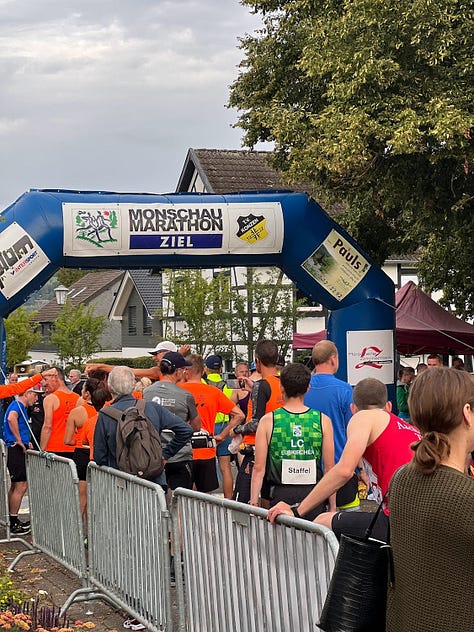
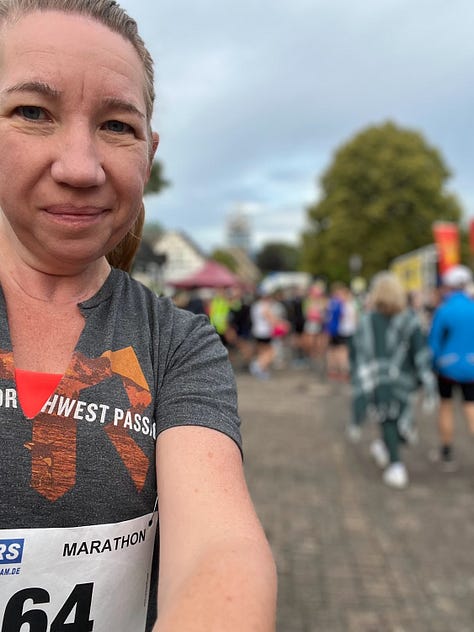
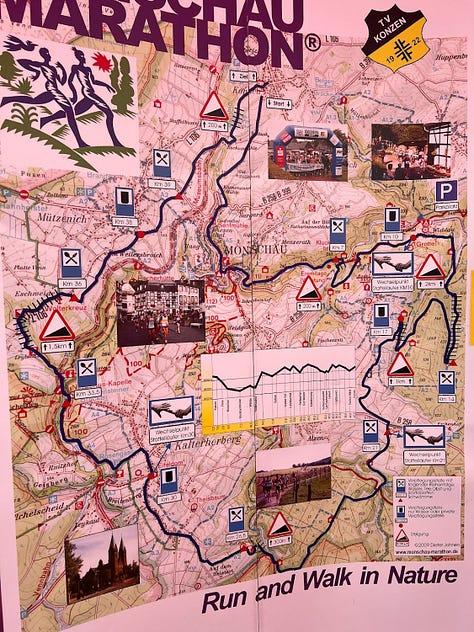

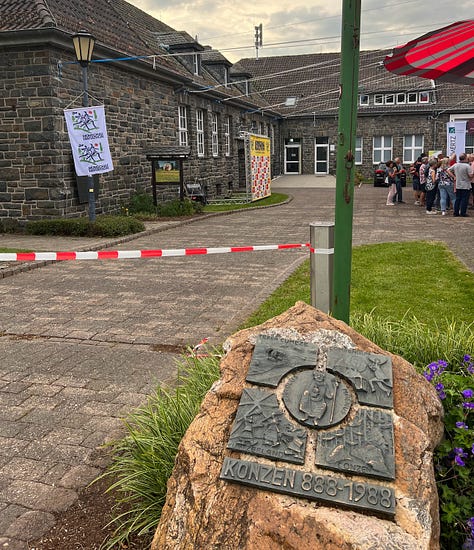

My leg started hurting two days before the race. The night before I could barely walk. I chalked it up to psycho-somatic pain, gave the hills in the distance a final wary look, and went to bed hoping for the best.
My leg hurt the whole race, but those 26.2 miles were worth it.
I’ve never run a race better organized than the Monschau Marathon. There were kilometer signs every step of the way (and it was great to not have to wait every mile for a sign!), and aide stations were always fully stocked with every imaginable amenity. In addition to the standard water and energy drinks, there were sponges, cut-up fruit, lotion, Advil, adhesive bandages, and beer.
It was also the most beautiful race I’ve run. The Monschau Marathon was a delightful mix. There was some trail running, but then you’d come through a tiny little town at the top of a hill. Such a delight.
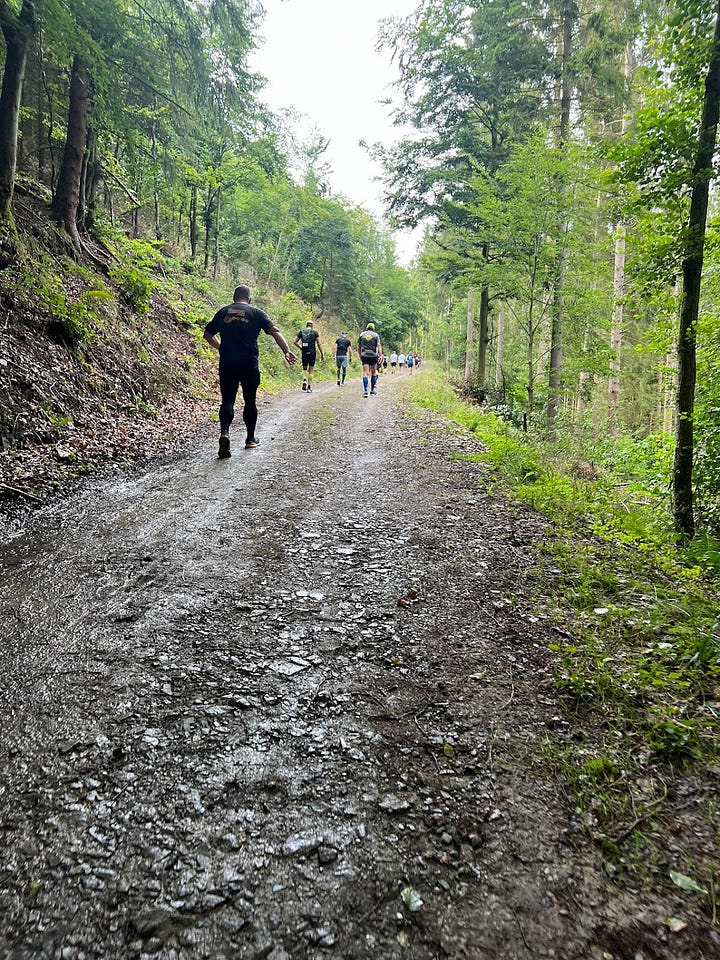
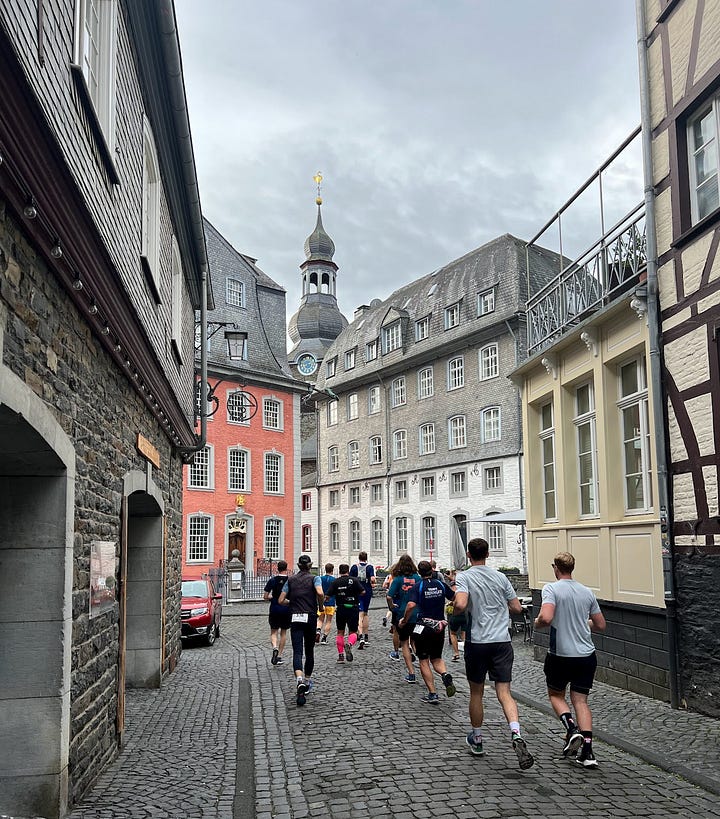
Should you ever get to run a race in Germany, I highly recommend it! Those Germans have got race organization and perfectly curated courses all figured out.
A lesson to teach: The Printing Press
Know what didn’t happen in Germany though? The invention of the printing press.
How was THAT for a transition? Lol.
The printing press was invented in China sometime before 900 C. E.
Due to a mix of Eurocentrism and the sheer number of Chinese characters, Johannes Gutenberg of Germany generally gets the credit for perfecting the first practical printing press in the West. While he didn’t have an original invention, Gutenberg set off a printing and literacy revolution that changed Europe. So of course students need to know about it.
I open with a little lecture, starting with a quick description of how books were created before the printing press: handwritten. Students will immediately sympathize with monks stuck writing in scriptoriums (“That sounds horrible! Just like school!”) The lecture slides include a YouTube clip of how a printing press works, a slide about how lack of literacy negatively affected Europe, and some graphs, a map, and a pictogram showing how how printing press affected Europe. If you want students to take notes along with the lecture, here is a note-catcher to help them out.
This year I didn’t have them take notes, but skipped right to the analysis of the graphics. I printed out copies of the five graphs/maps/pictures from the lecture slides and taped them to big sticky paper. Then, I had students do a standard chalk-talk reacting to the information. Student groups react to the graphics by writing their reactions on the chart paper. Every two minutes, on my signal, groups move to the next poster.
The next day, I give students these graph notes and they go back and think about each graph/map/picture they saw the day before. They pull a few relevant facts from the graphic and write a summary about it. I kept all their chalk talk posters around the wall for reference.
And that’s it! Is it weird that I teach my students about the printing press by having them learn in multiple ways that do not involve reading? Ah, the irony.

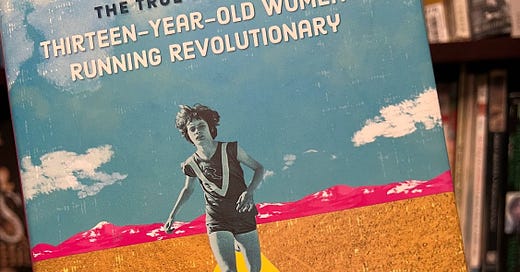


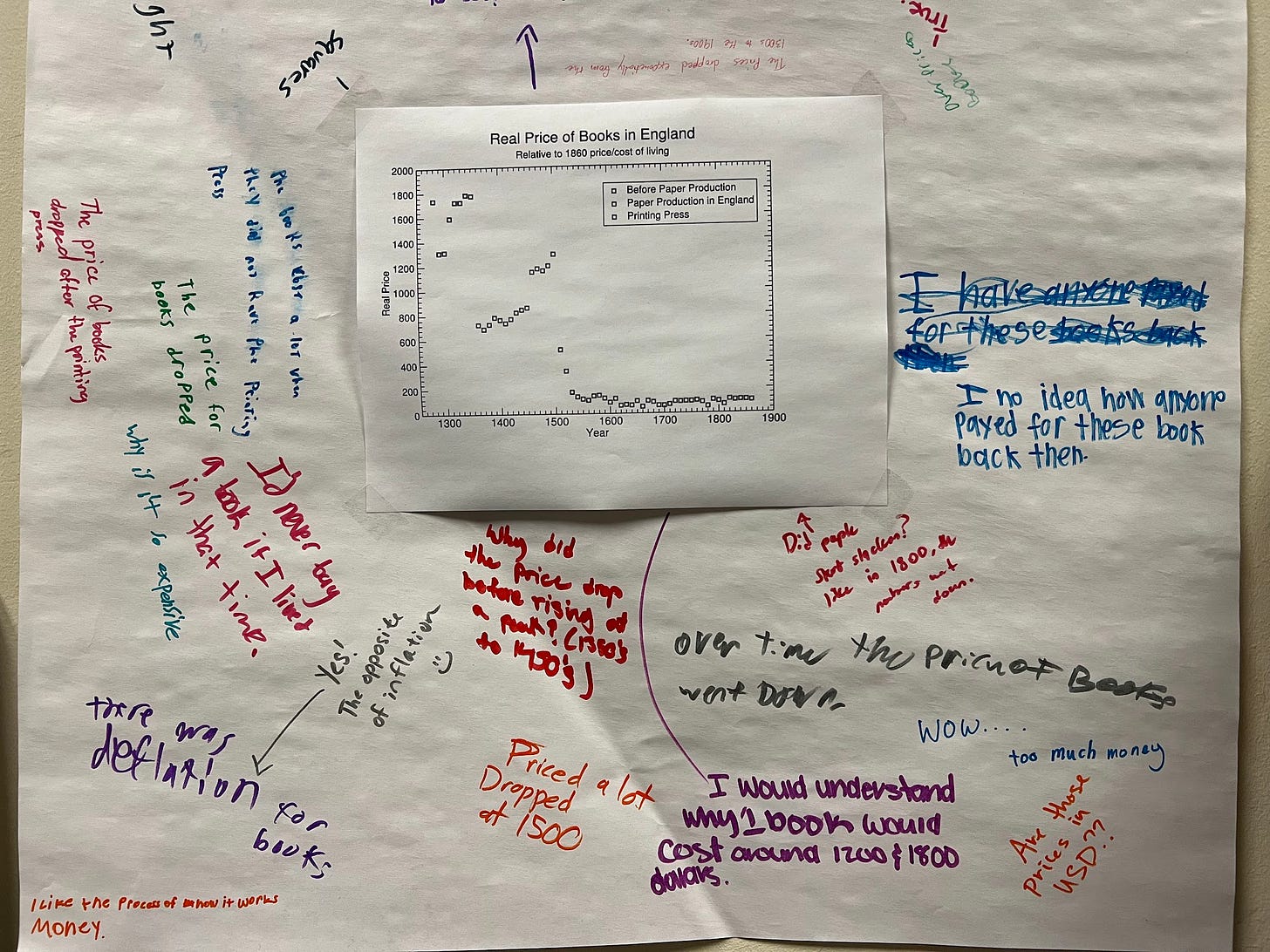
Oh, Jenna, you’ve done it again. Thanks for making my day.❤️
Jenna, I love the way there are so many great lessons in your posts - lessons about history, about people, lessons about lessons. And today, lessons about running. I hope you're running a marathon on Substack because I want to read more!